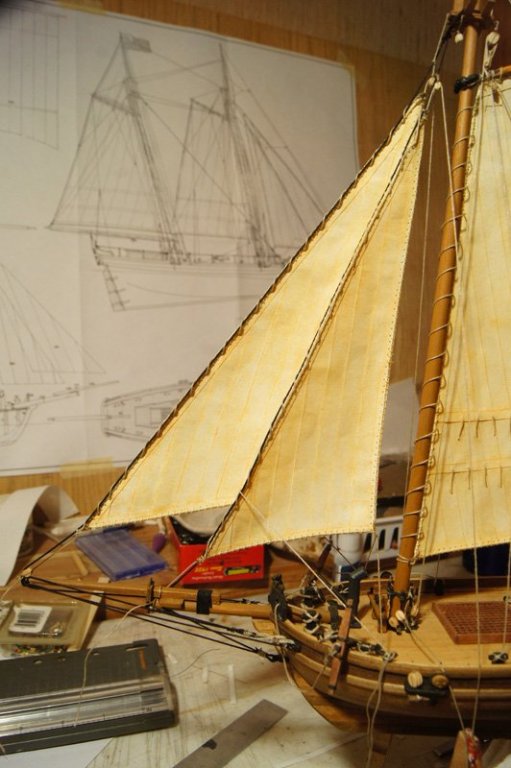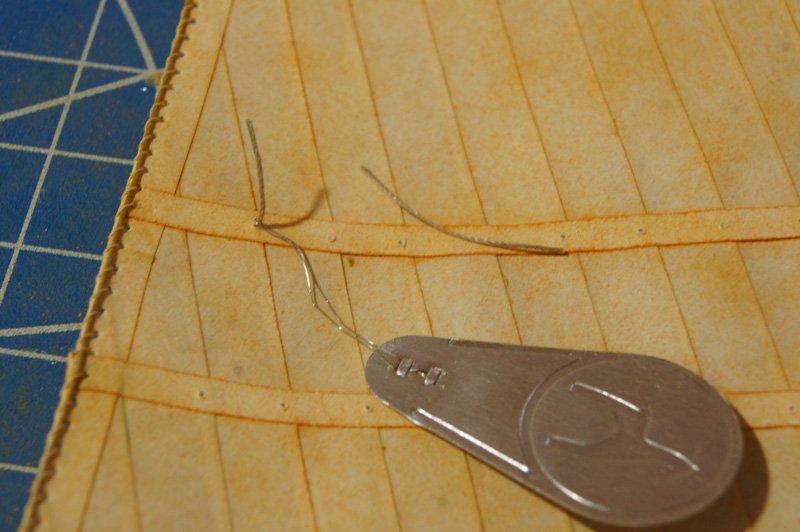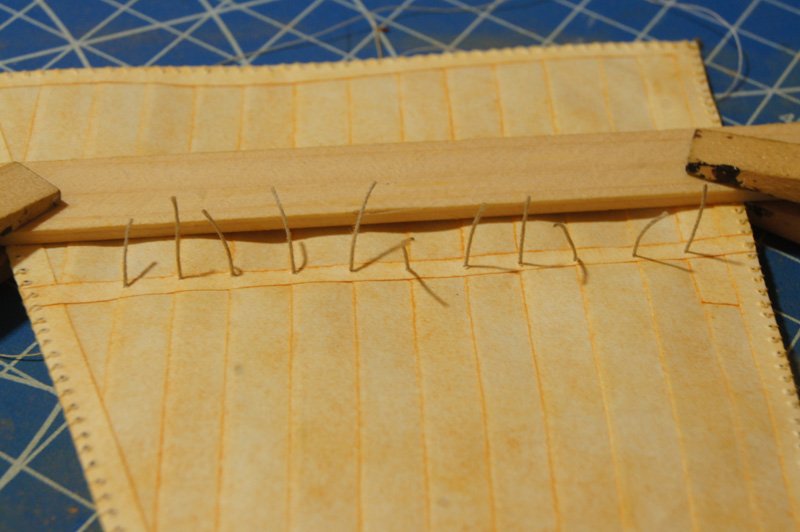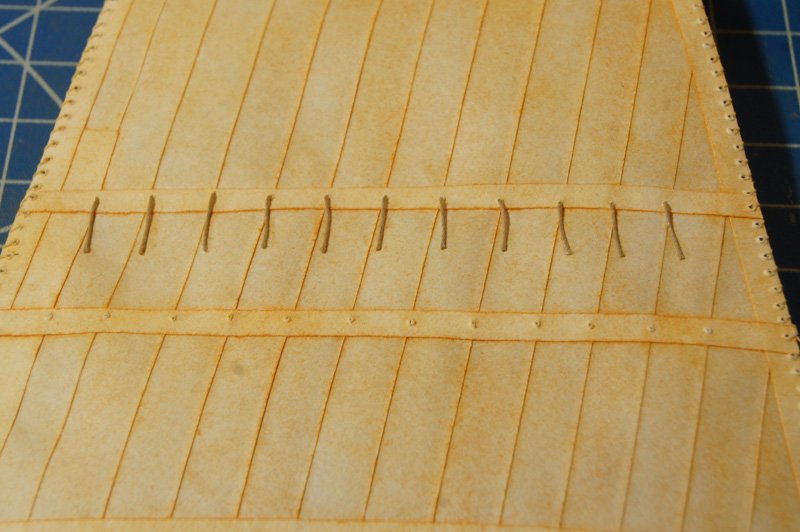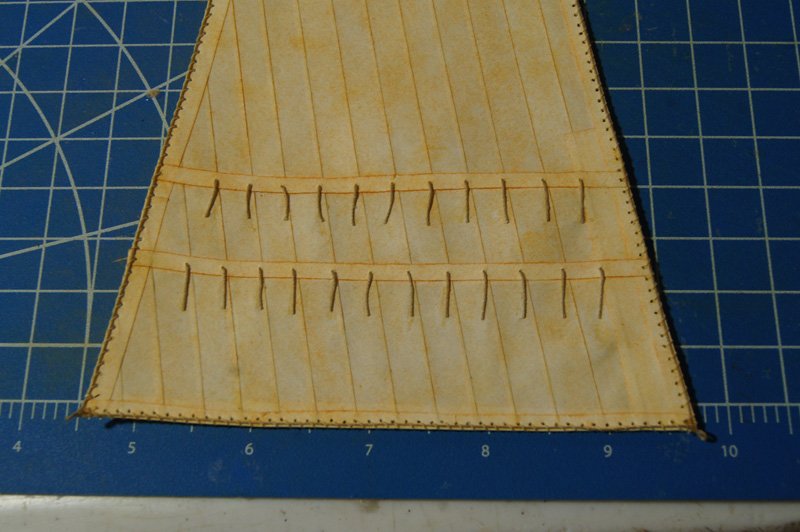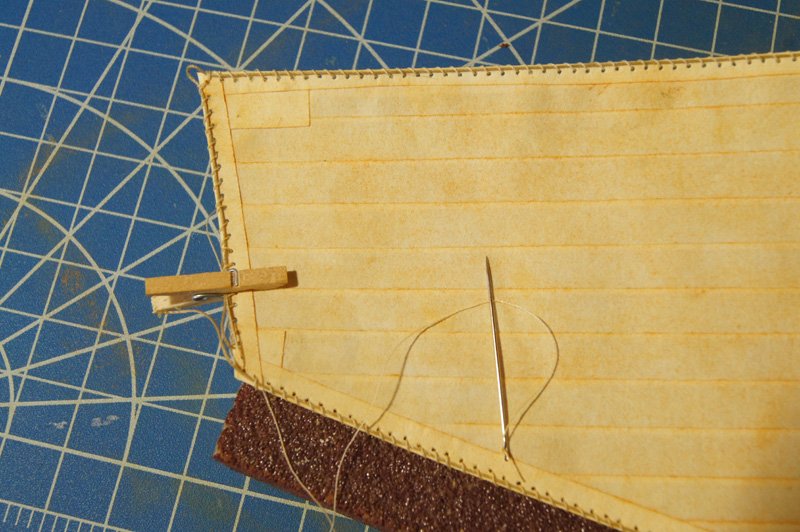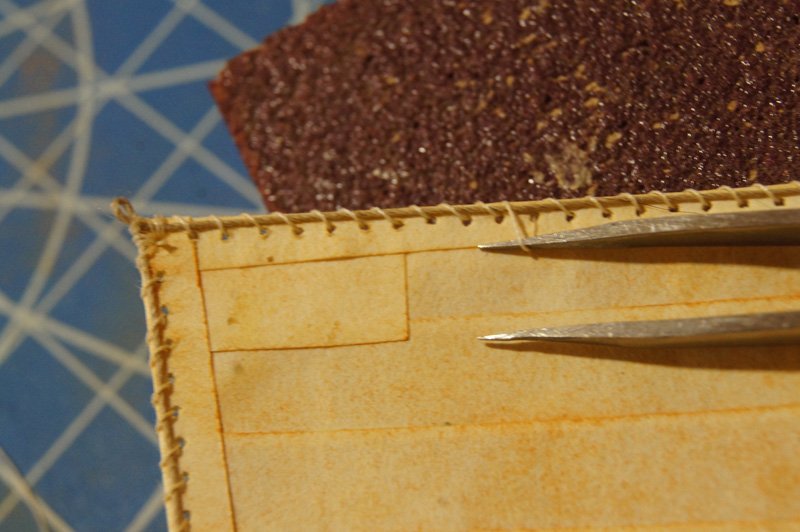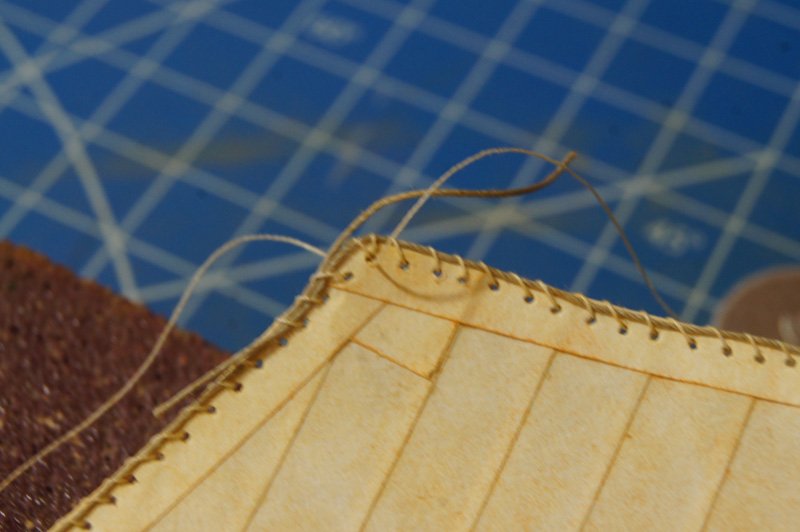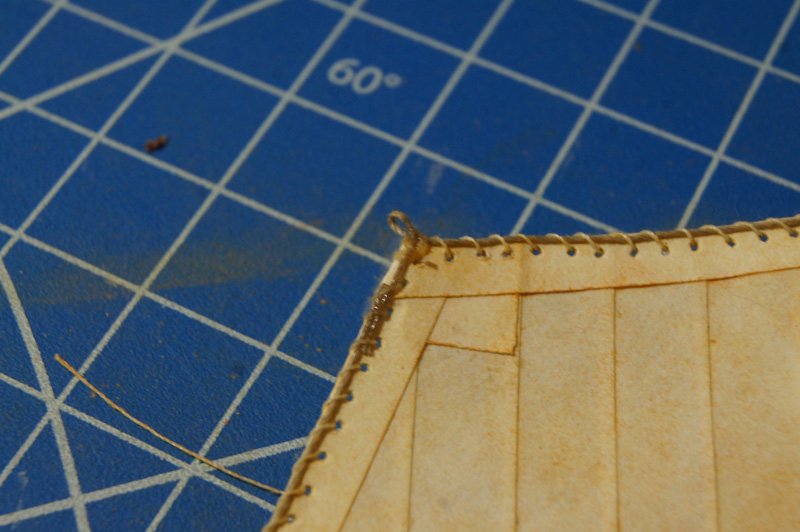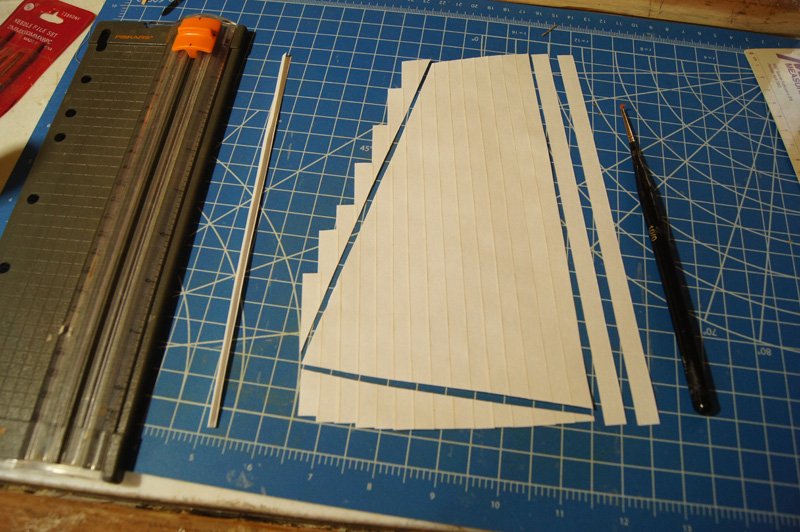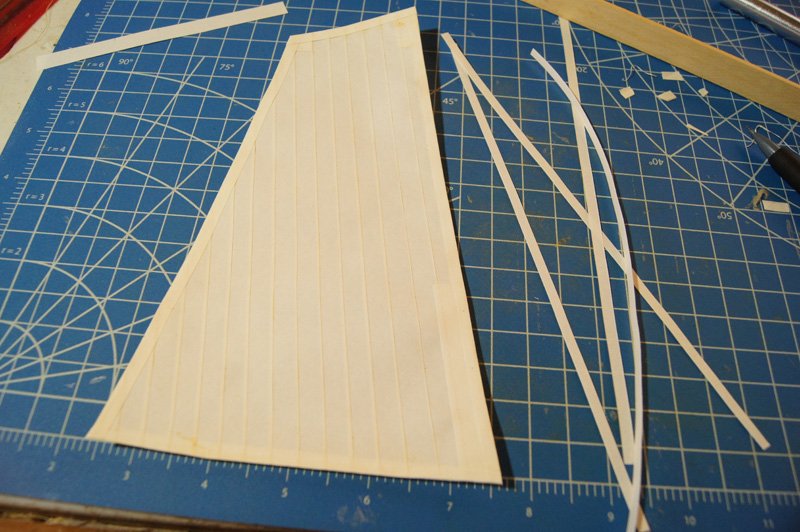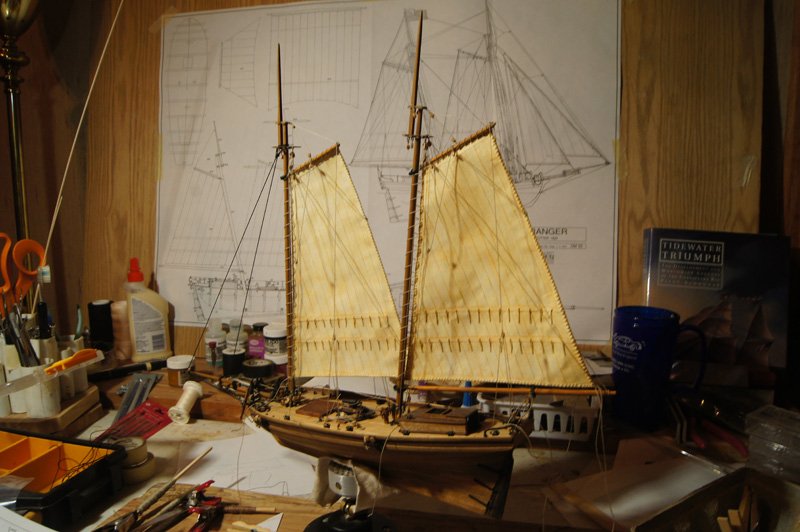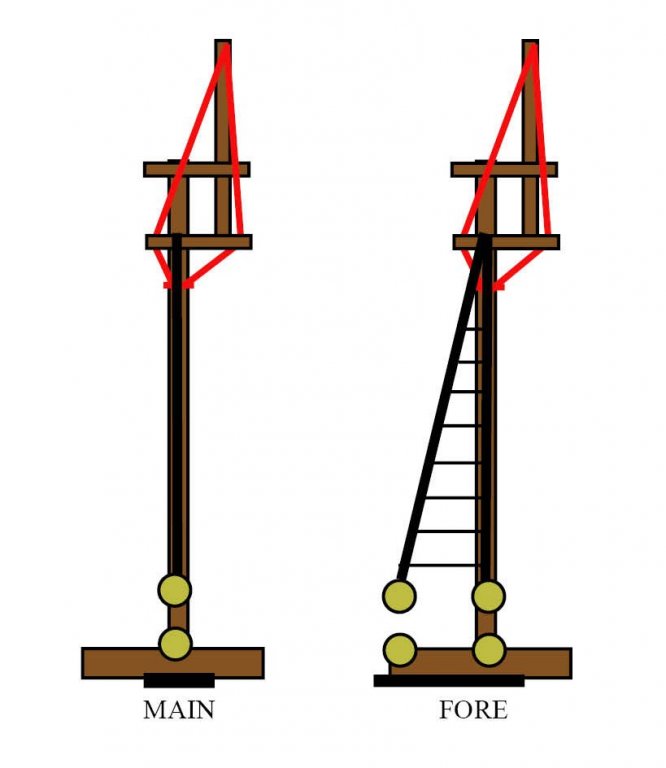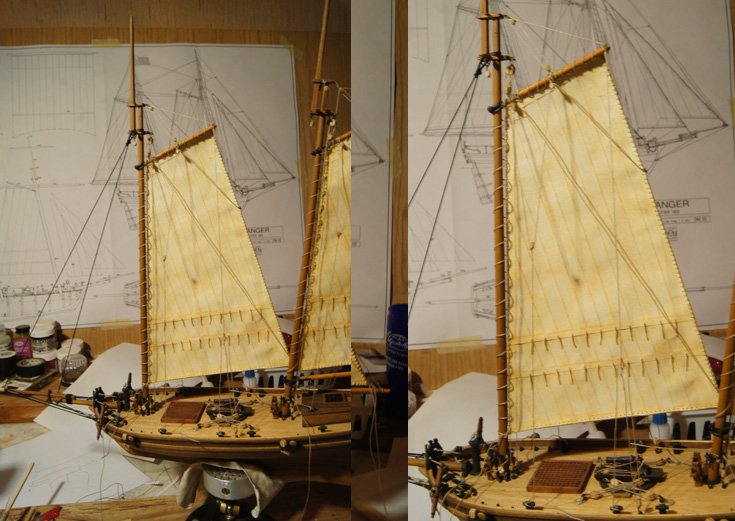-
Posts
3,500 -
Joined
-
Last visited
Content Type
Profiles
Forums
Gallery
Events
Everything posted by Cathead
-
Lovely work, Joe. I've been having fun this evening reading up on this class of ships thanks to your build.
- 136 replies
-
- caldercraft
- Cruiser
-
(and 2 more)
Tagged with:
-

SS Mariefred by captainbob - 1:96
Cathead replied to captainbob's topic in - Build logs for subjects built 1901 - Present Day
I'll just slip quietly into the back, as unlike many other readers I know nothing helpful, just that this looks like a beautiful and interesting design and I'd like to learn from the build. -
That canopy looks fantastic; what a great approach! And the chimneys now really fit into the rest of the model. I'm going to miss this build, but it's got me itching to start my next one.
- 296 replies
-
- chaperon
- model shipways
-
(and 1 more)
Tagged with:
-
This was my second-ever ship build; I built it more-or-less out of the box and learned a lot; it still sits on a shelf in my office. I agree that a kit like this can be a really good learning experience and a nice platform for experimentation and improvement. I didn't change the hull much, but did add better rigging after some study. Good luck with your project, I'll be interested to see what you do with it.
-
Daria and Mike, What a lovely project this is! I'm fascinated by the Russian kit, as a former Russian Language major in college. It looks quite interesting and well-crafted, and I would probably have fun trying to translate the instructions. And I can't say enough about how lovely it is to see a daughter-father project like this. Daria, you're doing excellent work so far and I hope you won't mind a random American following along to learn from what you're doing. Looking at the bow in that photo, did you feel that the kit provided enough internal support for the planking? There don't seem to be any filler blocks. Are the planks well-spiled enough to fit smoothly without any further support or aid?
-
I agree, stowed makes the most sense for your presentation.
- 165 replies
-
- finished
- model shipways
-
(and 1 more)
Tagged with:
-
Both jibs are made and (mostly) rigged. I ran out of rigging line at this stage; there's more on order from Syren, which should arrive any day now. I'm starting to get a little terrified of the rat's nest of loose rigging lines, none of which I want to fully tighten and glue until everything else is rigged. By the way, for anyone reading this who's interested, I also wrote up a summary of the method used to make the paper sails for this model. Once I get my new rigging line, I'll finish the jibs and start installing the two square foresails. That's going to be some tight work.
- 96 replies
-
- topsail schooner
- revenue cutter
-
(and 3 more)
Tagged with:
-
Personally I agree with Mike; it's not the level of weathering per se, it's that they don't look like the original metal was ever black. It's a bit distracting since overall the goal of weathering is to make the model more realistic, and in this case the eye wonders, "hey, why does that look like an unpainted white metal casting?". I think you could darken them a bit and still get the rusty, beaten-up effect you're going for. But that being said, it's your model of course and you shouldn't construe such opinions as a reflection on the work. It's lovely and you've a right to finish it how you like. After all, you'll be looking at it a lot more than the rest of us!
- 296 replies
-
- chaperon
- model shipways
-
(and 1 more)
Tagged with:
-
Welcome, Scott, from another misplaced Yankee! I grew up along Lake Ontario but am now thoroughly landlocked in rural Missouri. How do you like the Shenandoah Valley? One upon a time I worked for Shenandoah National Park doing backcountry survey work; even found two historic plane crashes that had been forgotten and left undocumented. Like you, I miss being around open water and enjoy this hobby as a way to maintain that connection. Hope you enjoy your modelling work; this community is a great place to learn and share.
-
Captain, reviewing the manual, there's a 3x3 mm strip and then some 1.5x1.5 mm strips. Of those, you need to use the 3x3 for the keel while reserving the 1.5s for the rails. Do you have another thin walnut strip that doesn't match either of those dimensions? The 3x3 is just a tiny bit wider than the internal keel, which is something like 2.5 mm. There's a tiny bump in width after you glue the two together. You can sand this down if desired; I found that it made no visual difference when laying the planking over it. It would be nice if the company could get their dimensions the same.
- 96 replies
-
- topsail schooner
- revenue cutter
-
(and 3 more)
Tagged with:
-
Captain, as far as I can recall, I've used only the kit-supplied wood. You can check back in the early portion of the build log to be sure. Good luck on this one. I have to say, I think it's a difficult kit for a starter, because the instructions are weak and the materials are not ideal. I wish you the best of luck and I hope you start a build log so others can follow along and watch/help.
- 96 replies
-
- topsail schooner
- revenue cutter
-
(and 3 more)
Tagged with:
-

A method for making panelled sails using paper
Cathead replied to Cathead's topic in Masting, rigging and sails
Strange; I can see the image. Wefalck, those look quite nice, but I have a question: why are there twice as many holes as reef points?- 49 replies
-
- sails
- sail panels
-
(and 1 more)
Tagged with:
-

A method for making panelled sails using paper
Cathead replied to Cathead's topic in Masting, rigging and sails
Wefalck, thanks for your insights! Nice to hear from someone with more experience in this regard. Regarding reef points, I forgot to say this: I had tried to simulate what you decribe, but found that I was simply unable to tie a knot tightly enough on both sides of the sail to look right. There was always enough slack so that one side or the other shifted outward slightly, ruining the effect. This may well be simply a failure of skill; if it could be done right it'd be great. This particular model is in 1:64; I used bond paper because it's what I had on hand. I model on a tight budget and find great value in reusing materials already available to me. As I'm just an amateur, this sometimes is more important to me than perfection. For my model, the paper is close enough on inspection for all but the most knowledgeable, and here in the American Midwest, there is virtually no one knowledgeable enough to know the difference. Kiwibob, I have not tried rice paper, as noted above I used what I had on hand. I appreciate the suggestion, though, as now other people can try it and see if they prefer it.- 49 replies
-
- sails
- sail panels
-
(and 1 more)
Tagged with:
-

Did all topsail schooners have ratlines on both masts?
Cathead replied to Cathead's topic in Masting, rigging and sails
Frankie, I am definitely not an expert here, so appreciate your input. I certainly could add the second shroud back in for the mainmast; the question then becomes whether to use ratlines there, too, or not. As for the topmast shrouds, it depends on how I do them. If I run them through a collar and down to the deck along the mast, I'd rig them with blocks to a ring on the deck so they could be tensioned. If I stop them at the mast, you're right that I'll need something up there. Have to give that a bit more thought. One problem I've had in trying to research this, is that most images I can find are of larger craft than mine, so they naturally have 2-3 shrouds per mast, but I have more trouble finding a little schooner like this one. Here's one image from the USCG website that shows the Massachussetts, a reasonably comparable vessel (though still larger); she has two shrouds per mast, with ratlines on both, and it appears that the topmast shrouds pass through spreaders and then down to meet at a point on the channel just aft of the deadeyes; I can't tell quite tell what happens there, though. Thoughts on that setup?- 18 replies
-

A method for making panelled sails using paper
Cathead replied to Cathead's topic in Masting, rigging and sails
Allan, Check the first post; I used bond paper, which is a high-quality durable paper originally used for government bonds and now commonly used for archival papers or theses. It's expected to be a long-lasting paper because of its intended uses. It also has a nice rough texture that really simulates cloth well at small scales (as compared to printer or photo paper, which is too smooth and shiny). You raise a good point, depending on the intended life of the model. I don't imagine that any of my models will outlast me or have any interest beyond my lifespan (I'll be shocked if they're still of interest to anyone in even 20-30 years), so I'm not real worried. But I could definitely see how a more professionally-minded modeller might have concerns about the long-term durability. I suspect that coloring the paper with pastels doesn't hurt, as it's just a surface treatment. I don't know whether any kind of fixative spray would affect the lifespan one way or another. Finally, I don't know for sure what the glue will do; I know most modellers swear by basic wood glue as a very stable and long-lasting fixative, and assumed that it would behave the same way with paper, but can't say for sure. Thanks to everyone for checking in; please let me know if you try it because I'd love to hear about other people's experiences (better yet, post here so we can collect more experiences and advice).- 49 replies
-
- sails
- sail panels
-
(and 1 more)
Tagged with:
-

A method for making panelled sails using paper
Cathead replied to Cathead's topic in Masting, rigging and sails
Part III: Adding reef points Reef points add a lot of visual interest to sails, and they're easy to add in the paper-sail method. The reef bands were glued on in Part I. Where to place the reef points is something of an uncertain topic; I found references for a variety of options, including one point on each seam, one point within each panel, and two points within each panel. I chose to use the first approach. Because the paper layers were extra thick here, due to the seam and reef bands, I used a small drill bit to open up a hole rather than trying to drive a needle through. For the reef points, I cut a series of rigging rope a bit longer than I needed. I wanted my reef points 2 scale feet long, so I cut the rope 5' long to allow for trimming, then used a deadeye/block threader to run each line through the sail. The threader creates a strong crimp in the line, so I tried to center each line in the threader before pulling it back through; the crimp then becomes a natural reference point holding the line in place where it passes through the sail. When all the lines for a given band were threaded, I clamped a piece of wood across the sail 2 scale feet below the reef band as a reference marker. You can get the length right here in two ways: either trim each line to the right length relative to the crimp, or don't worry about the crimp and pull each one back through the sail until only 2' are left on the side you're working on. I then used a fine brush to gently apply a bit of glue to a line, then pressed it into place on the sail with its tip against the wood. You only have to hold the line in place for maybe 10-15 seconds for the glue to take hold, before moving on to the next one. I like to get glue from the tip to about 2/3 to the sail, not all the way to the sail. This means the line naturally bows out a bit where it comes out of the sail, giving it some 3D texture. Don't overdo the glue or you'll get weird stains on the paper. Also, don't worry about trying to get each line perfectly straight; they're going to want to curve this way and that, and buckle a bit, and that's exactly what you want because that really makes them look like loose lines dangling down. You want just enough glue to hold them relatively flat so they look like gravity is working. If you glue them too flat or perfect, they'll look glued on and artificial. Once one side is done, it looks something like the image above. Then you just turn the sail over, clamp the wood at 2' again, trim the remaining lines to length, and glue them in the same way. If there is more than one reef band, do the upper one first, since you're overall working on the lower side. Above, you see the same process being repeated for a lower line of reef points. And here are the two completed lines of reef points. They have a nice randomness that looks like loosely dangling lines. Note that, once again, I slightly messed up this demonstration by not cutting the upper line of reef points quite evenly (they're too short on the left). It figures that my demonstration sail would be the sloppiest of any I've made so far, but I hope the idea comes across. And, as above, this sort of things fades away when the sail is placed in the full context of a rigged model. I'm quite happy with this method. I've now made all six of the sails for my topsail schooner this way and feel that they have a strong visual interest and a realistic (if not perfectly accurate) appearance. Moreover, the method uses cheap material that's easy to work with, and requires no special skills other than some patience and care when handling glued paper. It's easy to test on random scraps first before trying a full sail, and it's easy to customize. For example, you could skip the panels and just use a full sheet of paper, or skip the boltropes, and still use the rest of the approach to have a nice sail that holds it shape and can even be shaped to hold a curve. I hope others find some or all of this interesting and useful as a different way to produce interesting sails for nautical models. Thanks for reading.- 49 replies
-
- sails
- sail panels
-
(and 1 more)
Tagged with:
-

A method for making panelled sails using paper
Cathead replied to Cathead's topic in Masting, rigging and sails
Part II: Adding boltropes My understanding is that boltropes are hard to get right in scale. The ropes themselves are pretty small at most common model scales, and the stitches that hold them on would be essentially invisible, certainly at this project's 1:64 scale. However, leaving them off removes clear visual interest and makes it difficult to attach lines to the sails properly. One approach in the paper-sail method would be to bury a fine line within the folded-over edging; this is the method I used on my longboat. Glue one side of the edging down, then spread glue on the rest, stretch a thin line along the seam, and fold the edging over. You now have a boltrope that's hidden from sight, but strengthens the sail and can be carefully looped at each corner to provide the proper attachment point (and it's easy to form cringles anywhere just by tugging it out slightly from the stitching). However, for my current project, I wanted to include the visual interest of stitched boltropes even if they were out of scale. I know my model isn't perfectly accurate, and I'd rather it be a visually interesting representation of a real ship. So here's how I added them. First, I punched holes for the stitching all the way around the sail, having measured and marked straight lines of evenly-spaced points. Then I laid out my boltrope and stitched it into place with a running stitch (I used basic white sewing thread). This can be done two ways: either with a needle (as shown above) or with a deadeye/block threader like this one from Model Expo (which I love) [edit as of 2022: these are no longer sold by Model Expo but here's an example of an equivalent product from Joann Fabrics]. The former is a lot faster, but the needle's eye tends to make wider holes. The threader takes long, but leaves smaller holes that aren't as visible. The sail in this demonstration used a needle throughout, as I wanted to try it. Another benefit of pastel coloring occurs here: a bit of pastel rubs off on all the lines, inherently coloring them to match the sail. I stitched the boltrope on loosely all the way around, making extra stitches at each corner to create a proper loop. There will be two loose ends of the boltrope meeting at the first/final corner; we'll deal with that soon. Just leave a few inches extra when you start. Once the loose stitching is done, I used a fine tweezer to work along the stitch, pulling out all the slack. The boltrope sits naturally on one side of the sail; technically this is accurate, but rather out of scale. The true-scale boltrope would look like it was right along the sail's edge even if slightly to one side. However, once you get all the stitching really tight, you can actually use your fingers to massage the boltrope up almost to the edge of the sail, where it looks about as right as you can get. Once each corner's loop and stitching is tight and as I want it, I applied a small drop of CA glue to the stitching binding the loop in place, ensuring that it's not going anywhere. Now for the final corner. When the boltrope is stretched tight in all directions, cut it short at both ends and weave each end back into the stitching, overlapping itself a little. Then you can nip it off carefully near the corner, allowing for one final loop, and pull the stitching tight to hold it in place. Another small application of CA glue holds this in place. This is actually a very sloppy final corner; the worse one I've done so far. I cut the upward-running rope too short, so that my joint falls down the side of the sail. I meant it to fit right in under the loop, where the extra stitching hides it. Still, it's barely noticeable from more than a few inches away. This approach gives you out-of-scale, but functional and very interesting, boltropes. Personally I think they look really nice in the context of the model overall (see any of the overview photos). They demonstrate to any viewer how this part of the ship would work, and they give the sail extra texture. Again, I like that this approach demonstrates the reality of the sail rather than perfectly simulating it. Your approach, and priorities, may vary. In the next post, I'll attach reef points and show the completed sail.- 49 replies
-
- sails
- sail panels
-
(and 1 more)
Tagged with:
-
I've developed a method for making paneled sails from paper that works nicely to simulate the three-dimensional texture of a sail. It seems to offer a lot of visual interest, more so than a flat sail, and the procedure is pretty manageable. I like paper sails for several reasons: they hold their shape better than cloth sails (including a natural bellied curve), they have a nice texture (especially when colored by pastels), and there's no need for complicated or careful sewing. In this topic I'll walk through the method I worked out so far, starting with making the panels themselves. I haven't seen much else about paper sails on MSW, so hopefully this is of interest to some folks. I first tried paper sails on my 18th century longboat build and was quite happy with the result. In that case, I just used a flat sheet of paper and drew on the seams and stitches. It worked, but was too flat. For my current build of a US Revenue Cutter, I decided to try making sails the prototypical way, assembling them from long panels of material joined at the edges. I first asked for guidance in another sail-making thread, which produced a lot of good ideas and guidance. This guide to sail-making from the Historic Naval Ships Association was a particularly useful suggestion, as it's chock full of detailed diagrams for the arrangement of panels and the overall design of sails for different craft. Following these guides, I made a few sails and was very pleased, so I finally put in the time to document each step of the process for the foresail of my revenue cutter. Here's what these sails look like on that model: Cutting & Assembling Panels I used bond paper, which is heavier and more textured than regular printer paper. This is commonly used for printing theses; my supply came from leftovers of Mrs. Cathead's graduate thesis. Beware of watermarks in bond paper; you don't want your sail advertising a paper company when you shine a light on it! As shown above, I mark a sheet of bond paper in scale 2' strips, then cut the strips on a small paper-cutter. Using a dedicated fine brush, I run a narrow strip of basic wood glue along the edge of each strip, then lay it out on the edge of a neighbor strip. A glue stick might work too, but I've been fine using this method. Repeating this process produces a nice 3D-textured shape from which you can cut the final sail pattern. Make sure you pay attention to the direction in which you lay out the strips; I did one of my sails backward (so that the seams ran counter to the other sails) and had to start over because it looked funny. Above, you can already see how the overlapped panels create more visual interest than a plain, smooth sail. Next, I cut and attach any corner reinforcement panels. Then I cut thinner strips for the edging of the sails, and fold them in half. Then I brush glue along the inner surface of each one, and carefully fold it in place along the sail's edges. There are several ways to do this: you can brush 1/2 of the strip, glue it on, then brush on the other 1/2 and fold it over; or you can brush the whole inner surface at once. Although the former approach sounds better in theory, I've found that the moisture in the glue causes the paper to buckle, so that if you do the 1/2 approach, the strip bends out of true and is really hard to align on the sail's edge. If you glue the whole thing, it stays straight and is easier to handle. Incidentally, the same buckling-when-wet property works to your advantage in the sail overall; as the moisture dries between the panels, the sail inevitably takes on a bit of a curve, which nearly perfectly mimics the gently belly of a sail with wind in it. I also cut any reef-point strips and attach these. Once the sail is fully assembled, I color it with artist's pastels. You can use your finger or a cotton swab to gently rub on color; the paper takes up the color wonderfully, and it really brings out the texture of the bond paper. The 3D nature of the assembly helps, too, as the pastel powder naturally collects a bit along seams and highlights the structural elements of the sail. You can use a mix of colors to get just the appearance you want. One important warning: don't rub too hard, and hold the sail flat. A downside of paper vs. cloth is that paper creases; if you rub too hard or otherwise force the paper to bend or kink, you'll never get that feature out again. Some folks may want to use some kind of fixative on the color, but I've never bothered; the bond paper holds pastel really well on its own. Just be careful about handling the sail with fingers coated in pastel; you don't want to leave a dark fingerprint smudge somewhere. That's the first stage. You could stop here for a basic version, but I went ahead and added boltropes and reef points, which I'll cover in the next few posts.
- 49 replies
-
- sails
- sail panels
-
(and 1 more)
Tagged with:
-

Did all topsail schooners have ratlines on both masts?
Cathead replied to Cathead's topic in Masting, rigging and sails
Here is my latest thinking on the standing rigging for this topsail schooner, having considered all of your input and studied a variety of resources: The mainmast, which only supports a fore-aft sail, has one shroud, no ratlines. The foremast, which supports both a fore-aft sail plus a forecourse and foretopsail, has two shrouds with ratlines. Both masts have two topmast stays per side, which run through spreaders on the crosstrees, then down to a collar on the mast. I can either terminate them here in a collar, or run them through a collar down to the deck. I haven't decided which, though I'm leaning toward the former; thoughts? I like this for several reasons. One, it captures elements of many different contemporary schooner rigs; any one part of this has a prototypical example. Two, it makes each mast different, so there's more visual interest. Three, it means I don't have to rig ratlines on both masts! Four, I can intuitively understand why every bit of this would be rigged this way, which I like. Five, it's similar to the USRC Louisiana drawing I've been using regularly as a reference for this build, giving it more justification. And since mine is a freelance build, I can decide to rig it the way I want as long as there's a sensible explanation. Just to be clear, this doesn't show the rest of the standing rigging, which I'm pretty clear on. Thoughts?- 18 replies
-

Steamboats and other rivercraft - general discussion
Cathead replied to Cathead's topic in Nautical/Naval History
Chborgm, sorry for the slow reply, but I finally had a chance to pull out my copy of Steamboats on the Western Rivers by Louis C. Hunter, which has this to say about the safety act of 1838: Hunter goes on to argue that of the few inspectors created by the law, there was no oversight and essentially no structure, so the system quickly became corrupt and all but meaningless, especially on the Western rivers. Congress passed a new law in 1852 that seems to have been stronger and better enforced, but I couldn't find any further mention of signal light regulations specifically. On the other hand, Hunter notes elsewhere that steamboat pilots vigorously protested any requirement for carrying signal lights on the grounds that such lights would reduce or ruin their night vision and their ability to read the river's surface, due to the glare and reflection off the water. You also might enjoy reading this archived article from the February 23, 1865 New York Times, which discusses the history of regulation of navigation lights on inland waterways in the US, with reference to the 1852 act of Congress. Essentially it seems to argue that as of 1865, there was still no clear regulatory structure or enforcement of the subject on inland waterways. Finally, this passage from The Steamboat Bertrand and Missouri River Commerce tells a similar tale: the 1838 law was toothless, the 1852 law stricter, but nowhere is it clear if and when clear guidance was written and enforced on just what kind of lights steamboats were required to carry. In other words, backdate your boat toward the Civil War (which you've already done by converting her to a wood-burner), and you can get away with all sorts of options, including no signal lights, especially in a freelance build. Cool question, wish I had more positive knowledge about it.- 281 replies
-
- Steamboats
- riverboats
-
(and 3 more)
Tagged with:
-
The foresail is made and rigged. This was essentially a repeat of the mainsail, so there's really nothing new to report. If you happen to notice that the fore- and mainmasts aren't at the same angle (spreading apart as they rise), that's a temporary mistake. I hadn't noticed it at first, but when I was experimenting with tightening down all the running rigging on the mainsail, I apparently overdid it and pulled the mainmast aft (no standing rigging is installed yet). It'll be fixed once I start installing more standing rigging. Apologies for doing such a terrible job of updating this log. Among a variety of factors, I've been super-busy lately with my editing work over the last month, along with taking some online classes, meaning that sitting down on evenings or weekends to spend more time working with words on the computer for MSW hasn't really been high on my "fun" list. I also took a long-delayed trip to Kansas City, Missouri to revisit the Steamboat Arabia museum to research my next model project, another Missouri River steamboat along the same lines as my Bertrand but a sidewheeler from ten years earlier. I have a wealth of photos and measurements of the boat's salvaged equipment, stern, and cargo to pore over and write up, which has also been distracting me. But I haven't given up on this ship! I'm also still working through my uncertainties about the standing rigging, and recently ordered some deadeye kits from Syren. Next up, I'll make and rig the remaining sails, then start in on the standing rigging. I hope to update again before another month goes past. Thank you all for sticking with me on this; it's nice to have even a small audience to keep me going as my brain wanders toward my beloved riverboats again.
- 96 replies
-
- topsail schooner
- revenue cutter
-
(and 3 more)
Tagged with:
About us
Modelshipworld - Advancing Ship Modeling through Research
SSL Secured
Your security is important for us so this Website is SSL-Secured
NRG Mailing Address
Nautical Research Guild
237 South Lincoln Street
Westmont IL, 60559-1917
Model Ship World ® and the MSW logo are Registered Trademarks, and belong to the Nautical Research Guild (United States Patent and Trademark Office: No. 6,929,264 & No. 6,929,274, registered Dec. 20, 2022)
Helpful Links
About the NRG
If you enjoy building ship models that are historically accurate as well as beautiful, then The Nautical Research Guild (NRG) is just right for you.
The Guild is a non-profit educational organization whose mission is to “Advance Ship Modeling Through Research”. We provide support to our members in their efforts to raise the quality of their model ships.
The Nautical Research Guild has published our world-renowned quarterly magazine, The Nautical Research Journal, since 1955. The pages of the Journal are full of articles by accomplished ship modelers who show you how they create those exquisite details on their models, and by maritime historians who show you the correct details to build. The Journal is available in both print and digital editions. Go to the NRG web site (www.thenrg.org) to download a complimentary digital copy of the Journal. The NRG also publishes plan sets, books and compilations of back issues of the Journal and the former Ships in Scale and Model Ship Builder magazines.



